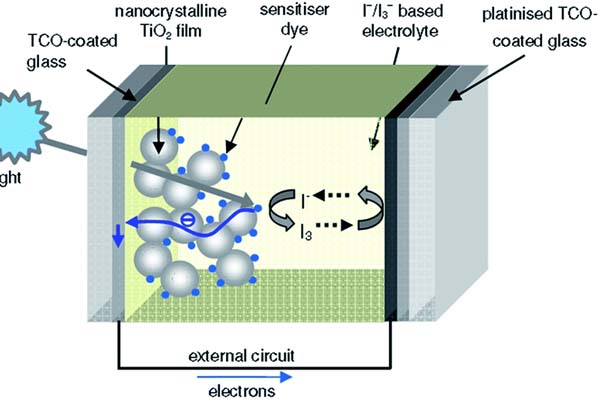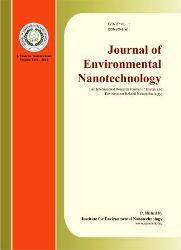
Finding alternative sources of power is a hot topic on the minds of many American sright now, but imagine living in a society where finding any source of power is a daily issue. As third-world nations around the world continue to develop, there is a striking need to provide a source of electrical power to areas that have no access to the traditional power plants that Americans take for granted. A commonly proposed solution to this issue is to introduce solar cells to these remote areas. Solar cells produce relatively cheap and clean power, while their size and the maintenance requirements are small enough that they would suit locations that are inaccessible to other power sources. However, traditional solar cells have many drawbacks that make this proposal more of a dream than a reality.
Dye-sensitized solar cells [DSSCs] have emerged as the next generation of photovoltaic devices, offering several advantages, including moderate light-to-electricity conversion efficiency, easy fabrication, and low cost Generally, a DSSC is composed of a mesoporous nanocrystalline film (normally titanium oxide), to whose surface is attached a monolayer of the charge-transfer dye molecule, an electrolyte containing a dissolved iodide/tri-iodide redox couple, and a counter electrode. The role of counter electrodes is to transfer electrons from the external circuit to the tri-iodide and iodine in the redox electrolyte. Most commonly, Pt counter electrodes are utilized; however, despite their excellent properties, they suffer from several limitations, e.g., difficulty in large-scale production and high economic cost. Carbon nanomaterials provide a promising alternative to Pt owing to their intrinsic attractive features, notably their high electrical conductivity, corrosion resistance, and excellent electrocatalytic activity, as well as their increasingly affordable cost. The application of various carbon nanomaterials, such as carbon blacks, carbon nanotubes, and graphenes, to counter electrodes has been widely documented in the literature.
In order to overcome those problems, we investigated counter electrodes fabricated with three different carbonbased materials such as graphene, single-walled carbon nanotubes [SWNTs], and graphene-SWNT composites using electrophoretic deposition [EPD]. The EPD method is an automated and high-throughput process that has been widely employed in the industry; it can provide a homogeneous and robust film on the surface of the substrate. Herein, we present fabrication and characterization results of counter electrodes of graphene, SWNTs, and graphene-SWNT composites by the EPD method using a dispersion solution of CNTs and graphene




